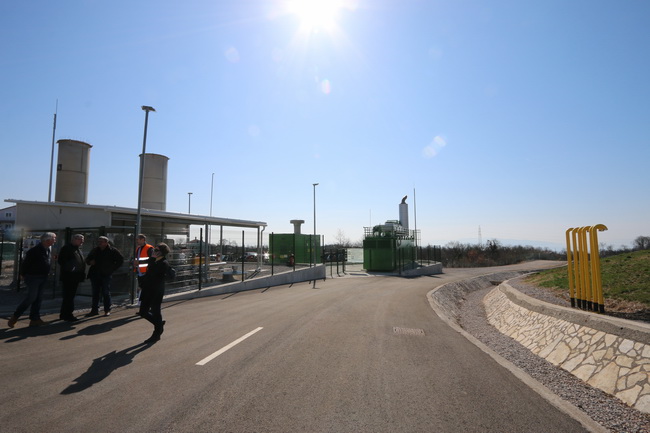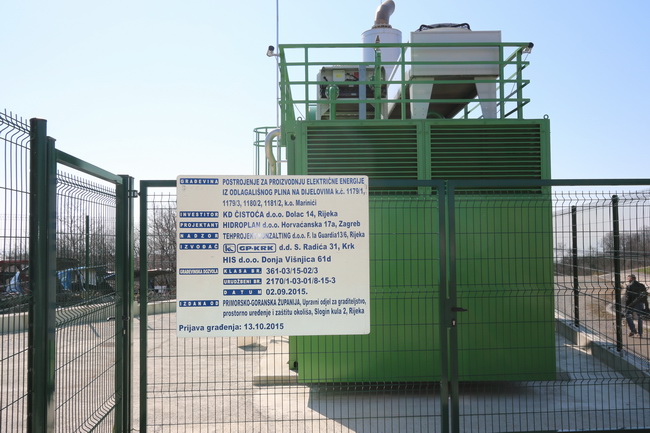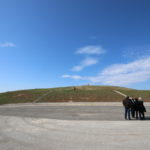
The landfill gas power plant, situated on the rehabilitated landfill site Viševac has been put into trial operation. It is a plant that for the production of electricity uses gas generated by the decomposition of organic compounds, which otherwise would be burned, whereby reducing emissions of landfill gas and achieving energy efficiency. The plant is worth HRK 10 million, exclusive of VAT, and is entirely financed by utility company Čistoća.
Viševac landfill was used for the disposal of municipal waste in the period from 1964 until the end of 2011. In this period about 2 million cubic metres of waste were disposed there. After having stopped the disposal activities, the landfill underwent rehabilitation. The amount of HRK 63.8 million, exclusive of VAT, was invested in the rehabilitation project.

The landfill gas power plant, situated on the rehabilitated landfill site Viševac
On the surface of the Viševac landfill, 52 landfill gas wells were drilled for safe extraction of gas which is generated by the decomposition of the organic component in which methane is the most important compound. By constructing this power plant, landfill gas, which otherwise would be burned, is used for the production of electricity whereby also reducing emissions of landfill gas and achieving energy efficiency. The plant is entirely economically sustainable and it has positive effects on the environment and the living conditions of local inhabitants. It is predicted that this plant with a generation capacity of 1.2 MW would produce over 6,000 MWh electricity annually.

Rehabilitated landfill site Viševac
The construction of the power plant is in accordance with the Covenant of Mayors Initiative, launched by the European Commission, whereby the City of Rijeka, as its signatory, committed itself to taking additional measures with the aim of increasing energy efficiency and sustainable development and thus also climate conservation. Furthermore, the project is in line with the Sustainable Energy Action Plan (SEAP) of the City of Rijeka which brings in various measures aimed at reducing by 32% CO2 emissions by 2020.

